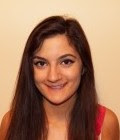For the Simons Foundation Autism Research Initiative,
Ari Ne’eman analyses DSM-5 autism criteria and its potential impact on services.
The fifth edition of the American Psychiatric Association’s Diagnostic and Statistical Manual of Mental Disorders (
DSM-5), released on May 18, combines Autistic Disorder, Asperger Syndrome and Pervasive Developmental Disorder -- Not Otherwise Specified under a single diagnostic category of Autism Spectrum Disorder.
Concerning the loss of Asperger syndrome as a separate diagnosis, Ne’eman indicates, “Many state agencies and school districts have implicit, and occasionally explicit, policies against allowing those with a diagnosis of Asperger syndrome or PDD-NOS to access services associated with an autism diagnosis.”
Like Ne’eman, I don’t share the views of critics who “couched their arguments in terms of culture.” Ne’eman reproduces a statement by Michael John Carley of the Global and Regional Asperger Syndrome Partership speaking to National Public Radio: “I personally am probably going to have a very hard time calling myself autistic.”
As reported by Ne’eman, Carley added “that he would find it difficult to share a diagnosis with ‘somebody who might have to wear adult diapers and maybe a head-restraining device.’”
Ne’eman, in response, states that “Carley and others are missing an opportunity to fight prejudice against all those on the spectrum, regardless of their support needs. ...
“By unifying our identity, we can include in our struggle those whom chance and circumstances have placed in separate diagnostic categories. Beyond that, there is something vaguely repulsive about maintaining the Asperger syndrome diagnosis solely to avoid prejudice and presumptions of inability. Shouldn’t we be trying to eliminate stigma and low expectations for everyone, rather than just shifting it to those who are less equipped to fight it? We can and should use this collective diagnosis as a chance to reinforce the relevance of human rights and self-advocacy for all of us.”
The concern that Ne’eman feels carries the most validity is if everyone who qualified for an autism spectrum diagnosis under DSM-4 will continue to do so under DSM-5. He does point out that for the first time, under DSM-5, people can meet criteria both “currently or by history” and that criteria explicitly acknowledges learned strategies and coping skills.
But Ne’eman echoes sentiments I have heard elsewhere and also believe: that the real test of the DSM-5 will come when it is applied in the field.
Ne’eman is president of the Autistic Self Advocacy Network, and one of President Obama’s appointees to the National Council on Disability. His report is part of a series of articles exploring the DSM-5.















